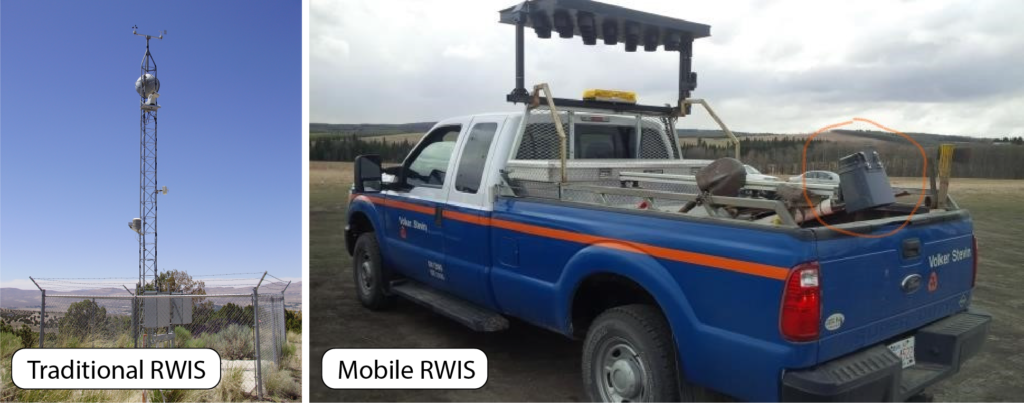Governments face the annual challenge of keeping roads safe during adverse winter weather. Effective winter maintenance is crucial not only for public safety but also for minimizing the economic impact of winter storms. One of the most valuable tools in this effort is the Road Weather Information System (RWIS). By leveraging RWIS data, governments can make more informed decisions regarding road maintenance, ensuring that resources are allocated efficiently and effectively.
What is RWIS?
Road Weather Information Systems (RWIS) are networks of environmental sensor stations placed along roadways. These RWIS stations gather real-time data on various atmospheric and pavement conditions, such as temperature, humidity, wind speed, and road conditions. Modern RWIS can even detect road salinity, friction, and the height of water, snow, and ice. This information is critical for understanding road conditions and predicting how they will evolve. RWIS data helps government agencies and contractors anticipate and respond to hazardous weather conditions more efficiently.

The Role of RWIS in Winter Maintenance
Winter maintenance is a complex task that involves the timely application of deicing agents, snow plowing, and continuous monitoring of road conditions. RWIS systems are invaluable in this process, as they provide the necessary data to guide these actions. For example, RWIS sensors can detect when road temperatures drop close to freezing, prompting the early application of salt or brine to prevent ice formation.
One of the key advantages of RWIS weather data is its ability to differentiate between road conditions in different locations. For instance, bridges are known to develop frost more quickly than roads because they do not receive heat from the ground. RWIS stations placed on bridges can alert maintenance crews to this faster frost formation, allowing them to treat these areas promptly.
The Evolution of RWIS Technology
Advancements in technology have led to the development of various types of RWIS systems, each designed to address specific needs:
- Virtual RWIS: Weatherlogics has pioneered the use of AI to produce virtual RWIS, offering road temperature and road condition forecasts without the need for physical stations. This technology is particularly valuable when budgets do not allow for physical RWIS installations, or when there are gaps in the existing RWIS network.
- Mini RWIS: Compact stations that provide localized data, ideal for smaller or remote areas.
- Mobile RWIS: These systems can be mounted on vehicles to collect data while in transit, providing real-time information across a wide geographic area.
- Traditional RWIS: These systems are typically mounted on poles along roads and bridges. They are equipped with a custom suite of sensors that can measure any desired environmental condition.
In addition to these innovative RWIS solutions, Weatherlogics utilizes a proprietary snow prediction algorithm to enhance the accuracy of snow forecasts. This allows governments to prepare for snow events more effectively, ensuring that snow removal resources are deployed where they are needed most.
Integrating RWIS with 511 Cameras and Other Tools
Many governments already use 511 cameras to monitor road conditions visually. Integrating these cameras with RWIS data can provide a more comprehensive view of the situation on the ground. By combining visual data with RWIS weather information, maintenance teams can validate sensor data and make more informed decisions.
Weather Forecasting Services for RWIS
While RWIS are useful for identifying weather and road conditions in real-time, they are not inherently predictive. However, RWIS can be extended into a predictive tool by pairing them with weather forecasting services. Companies like Weatherlogics offer RWIS forecasts, which take sensor data and utilize models to predict how conditions will change in the future. These predictive insights can be extremely valuable for anticipating upcoming weather hazards, allowing maintenance crews to be ready when the next storm strikes.
Conclusion
Road Weather Information Systems (RWIS) are a cornerstone of modern winter maintenance strategies. By utilizing RWIS data and adopting cutting-edge weather forecasting solutions, governments can enhance their ability to keep roads safe during the winter months. Weatherlogics is proud to support these efforts with our AI-driven forecasting and snow prediction algorithms. Together, we can make winter roads safer for everyone.






